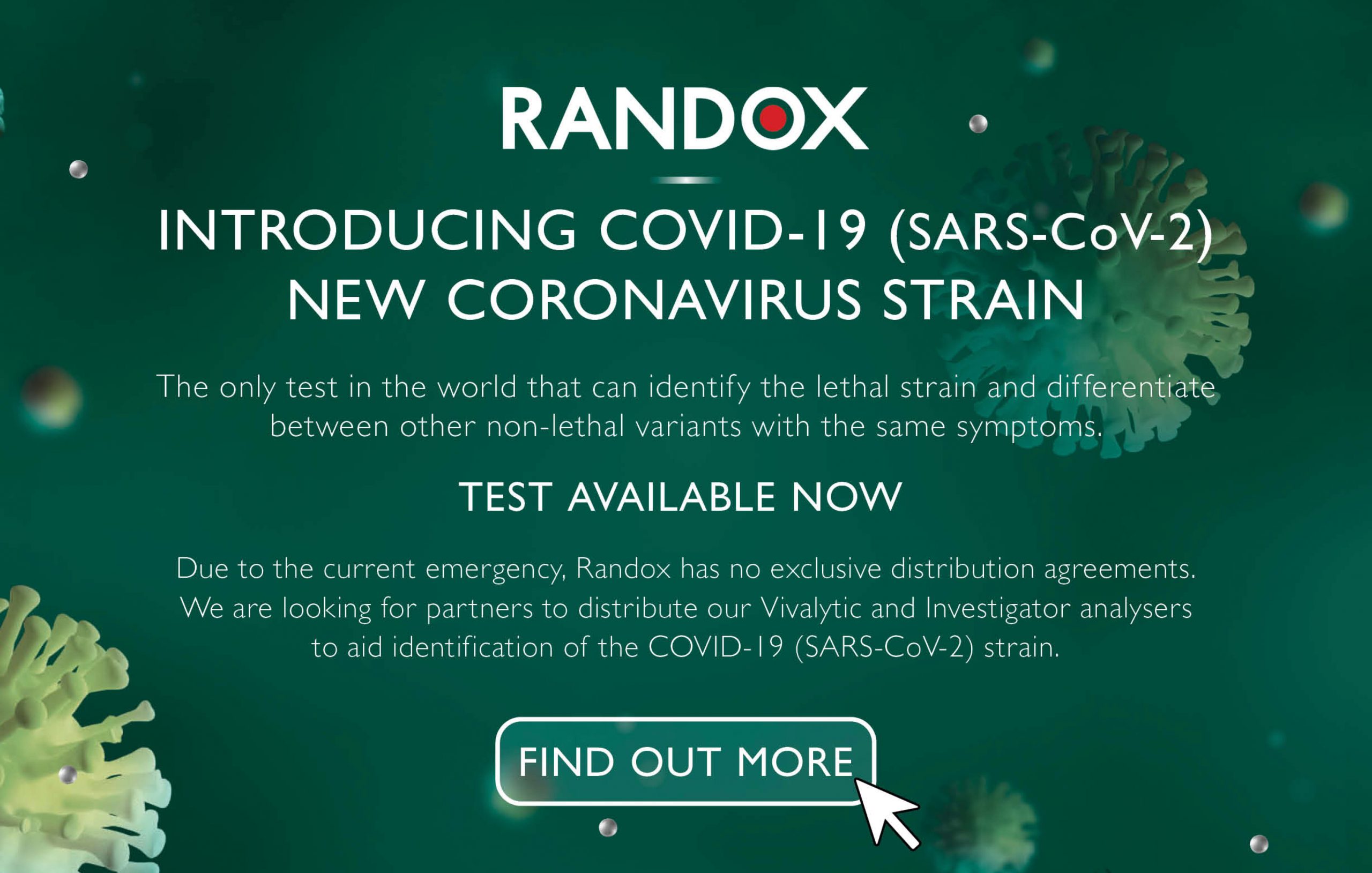Randox Food Diagnostics are attending AOAC Denver 2019
Randox Food Diagnostics are attending AOAC Denver 2019
30 August 2019
Randox Food Diagnostics are attending AOAC Denver 2019
Randox Food Diagnostics are exhibiting at AOAC in Denver. Various contaminants are administered to animals during the farming process to treat infection and maintain herd health. Regulations are often adhered to, as quality control procedures are put in place to ensure the safe supply of agricultural produce and this is where Biochip technology can streamline the quality control process. By offering a system that can analyse up to 48 sample simultaneously, our technology delivers higher throughput which in turn saves time and money on laboratory costs and labour.
Randox Food and Biochip Array Technology
Biochip Array technology (BAT) is designed with the aim of revolutionising the screening practices of your laboratory. Designed to work across a wide variety of matrices, BAT uses a micro-spotting technique to create an assay that can detect and provide quantitative results for up to 44 residues from a single sample.
The market leading 9mm x 9mm ceramic chip brings the capacity to detect the range of antibiotics, anti-parasitic, anti-inflammatory, growth promoting and mycotoxin residues simultaneously in a range of food and feed samples.
AOAC’s annual meeting is taking place this September in Denver. The meeting organises scientific sessions, roundtable discussions, workshops and poster presentations discussing a variety of analytical methods and requirements. Attended by scientists from across the world the conference discusses science at a different level.
At AOAC Denver you will get the opportunity to speak to our experts on the Biochip Array Technology. By visiting booth #416 you will get an introduction to BAT and find out how the technology can perfectly fit any of your screening needs.
To learn more about Biochip Array Technology contact info@randoxfooddiagnostics.com or stop by Booth #416 at AOAC Denver 2019 and chat the Randox Food team!
Find out more about AOAC.
Want to know more?
Contact us or visit our Randox Food Diagnostics website.
Related Products
Meat & Seafood
Milk
Honey
Wine
Protecting Pets from the Threat of Mycotoxins
Pet Food companies worldwide are working towards constantly improving and maximising the quality of their product. The problematic topic of mycotoxin contamination in pet feed is quickly becoming a major cause for concern. This is due to the risk they pose for animal health and with the increasing prevalence of mycotoxins globally the focus is on pet food companies to meet EU and FDA regulations and maximise the quality of their product.
What are Mycotoxins?
Mycotoxins are naturally occurring metabolites that are produced by certain moulds and with the ability to develop and grow on a variety of crops they can affect large amounts of feed and increasingly, pet food. If a sample tests positive even for low levels of contamination the toxins are still strong enough to cause illness in animals, and if low levels are consumed over a long period of time this can result in chronic illnesses including; cancer, organ damage and neurological disorders.
The main mycotoxins of concern in pet food are;
- Deoxynivalenol (DON)
- Fumonisins (FUM)
- Zearalenone (ZEN)
- Aflatoxins
- Ochratoxin
- T-2 Toxin
Contamination can occur in any country around the world and at any stage of production. Herein lies the issue of how to prevent mycotoxin pollution, to tackle the issue head on and work towards a mycotoxin free product is the joint responsibility of feed producers, supply chain partners and quality control laboratories ensuring the complete safety of the product.
How can you tell if an animal has ingested pet food contaminated with mycotoxins?
In terms of animal health, mycotoxins can cause a variety of problems. Severity and symptoms can vary from animal to animal but general symptoms include; hyperactivity, vomiting, high temperature and loss of coordination. If you suspect your pet has been affected by mycotoxins you must bring them to the vet for immediate treatment.
The European Union currently regulate all the mycotoxins listed above and are subject to maximum or recommended residue limits. In the US, FDA regulations are limited to aflatoxins, DON and fumonisins, see table below for FDA regulations. If mycotoxin levels in feed fail to meet FDA standards, mass amounts of feed may need to be destroyed as grain producers are prohibited from mixing contaminated feed with clean feed to reduce the mycotoxin levels.
| Pets | Mycotoxin | Commodity | Level |
| Immature Animals | Aflatoxins | Corn/ peanut/ other ingredients | 20 ppb |
| Adult Pets | Aflatoxins | Corn/ peanut/ cottonseed meal/ other ingredients | 20 ppb |
| DON | Grain/ grain byproducts, not to exceed 40% of diet | 5 ppm | |
| Fumonisins | Corn/ corn byproducts, not to exceed 50% of the diet | 10 ppm |
How do we tackle the problem?
Safe, reliable screening solutions for different variations of mycotoxins are available that can ensure only mycotoxin free feed is produced. Randox Food Diagnostics have created mycotoxin screening platforms as a response to increased levels of mycotoxins being found in feed globally.
The platforms use patented Biochip Array Technology (BAT) so pet food producers can test for multiple toxins from a single sample. Randox Food Diagnostics have a range of mycotoxin Biochip Arrays available with customised arrays available to suit the specific screening needs of certain producers. Each Biochip format uses a straightforward extraction process with a 50µl sample of feed, available tests include; Fumonisins, Ochratoxin A, Aflatoxin G1/G2, Aflatoxin B1, Paxiline, Ergot Alkaloids, Diacetoxyscirpenol, Deoxynivalenol, T2 Toxin and Zearalenone.
For more information on mycotoxin screening with Randox Food Diagnostics contact info@randoxfooddiagnostics.com



